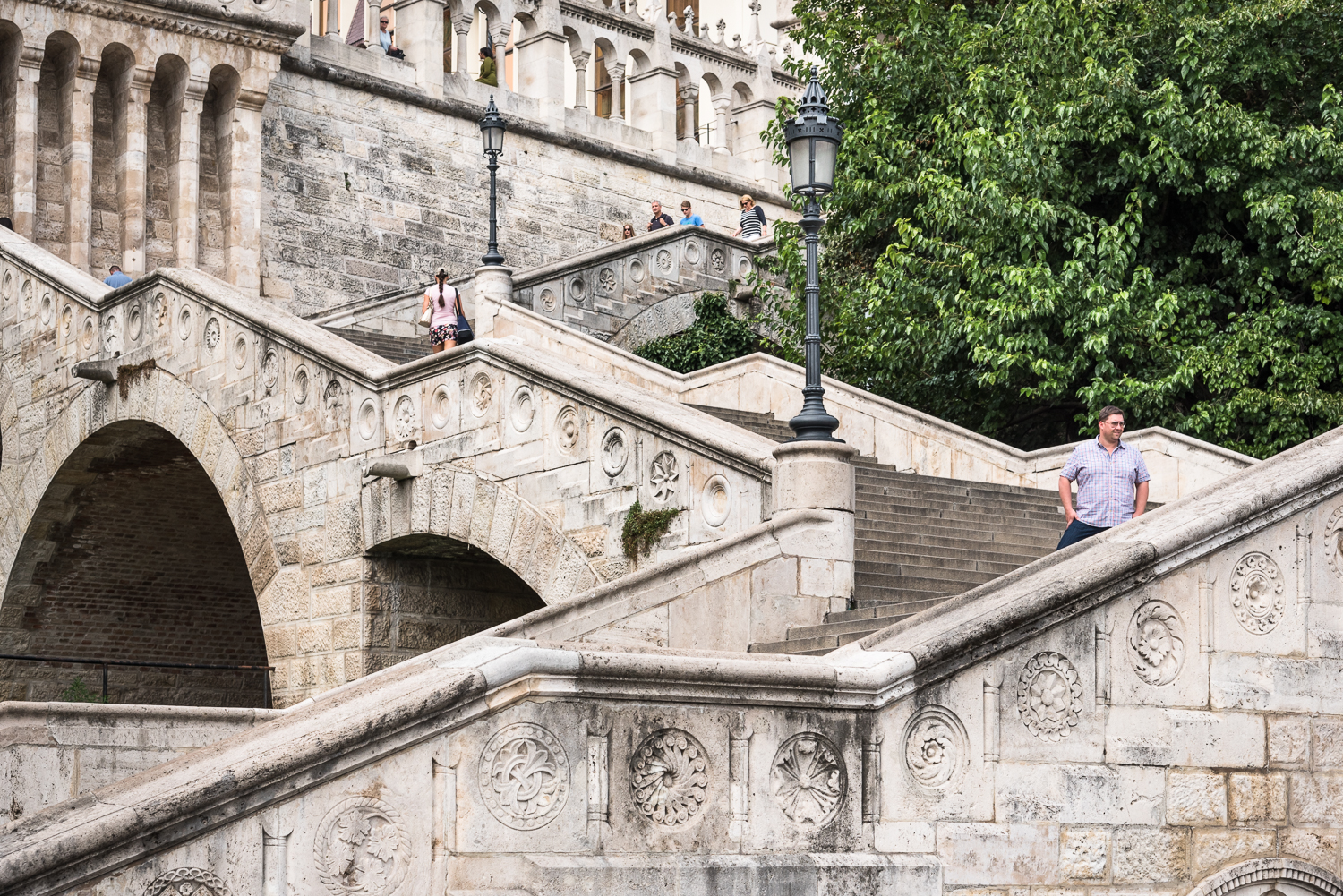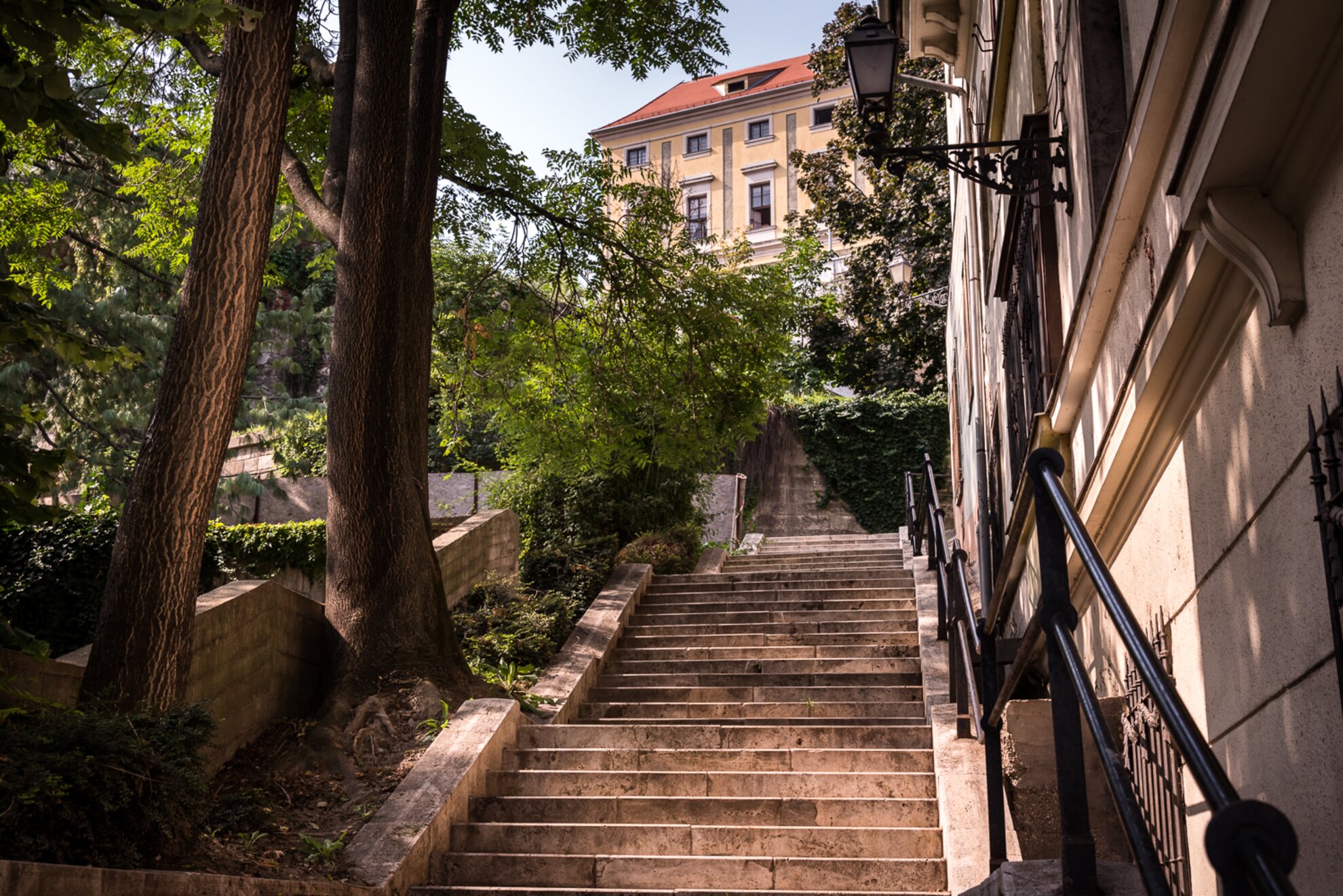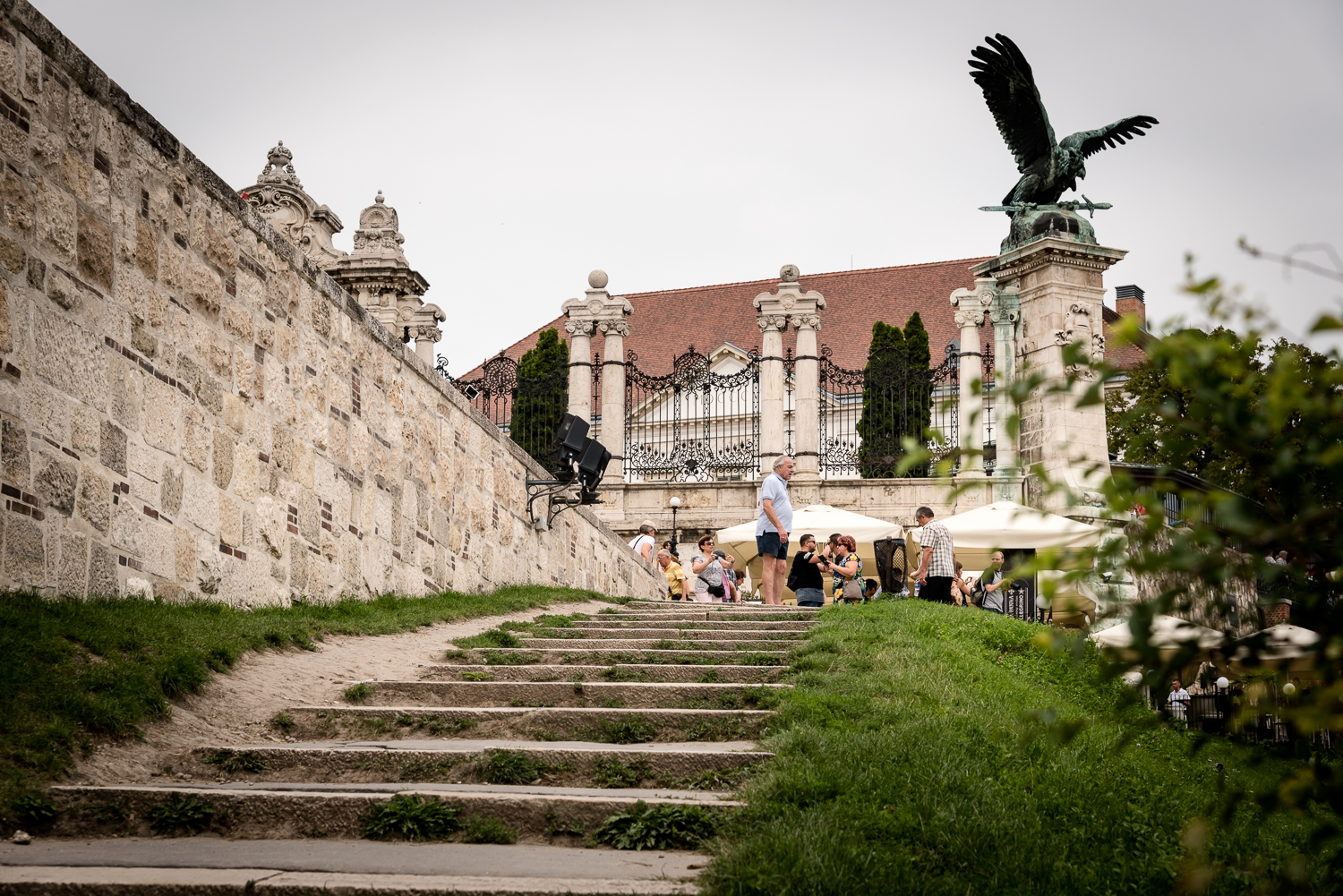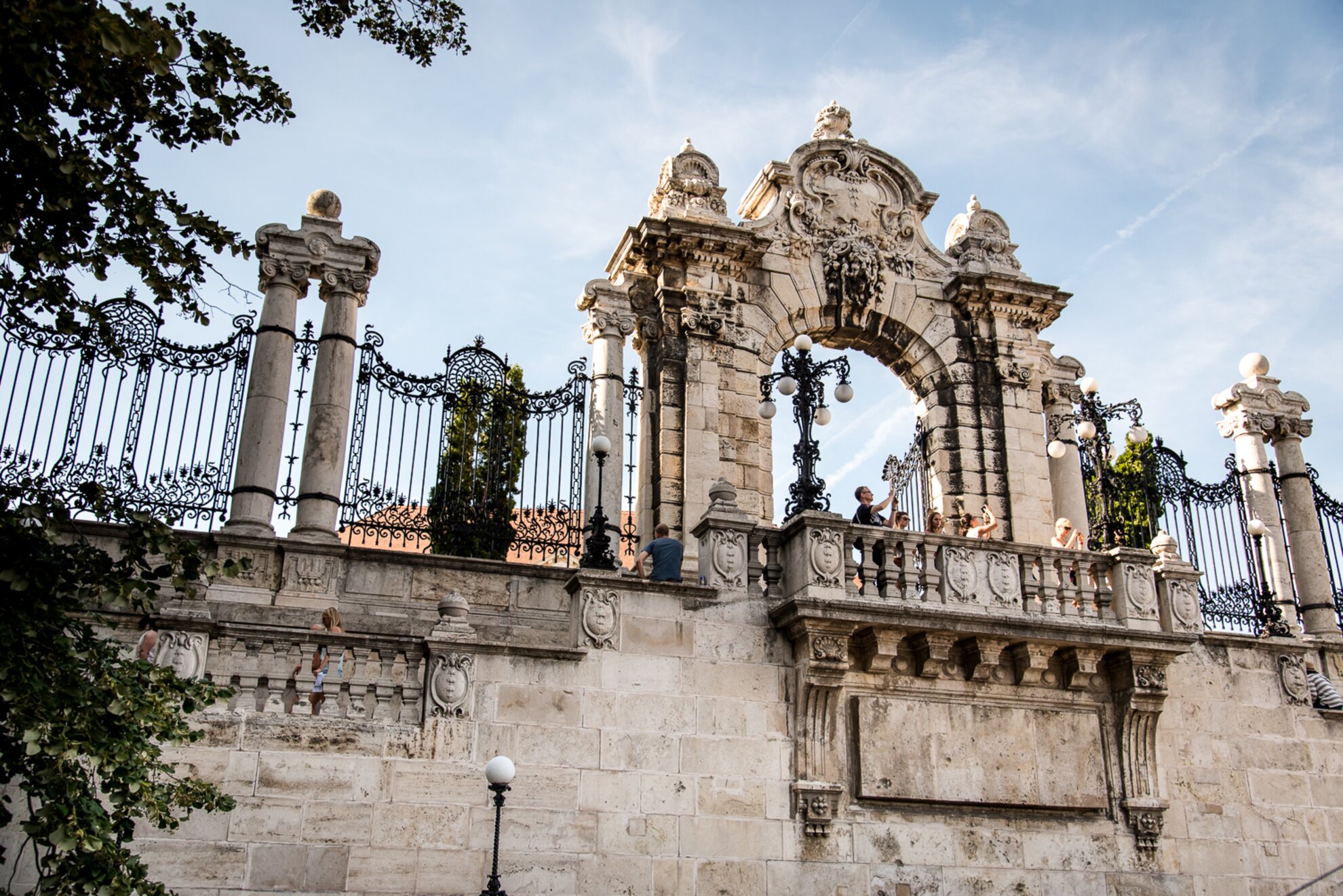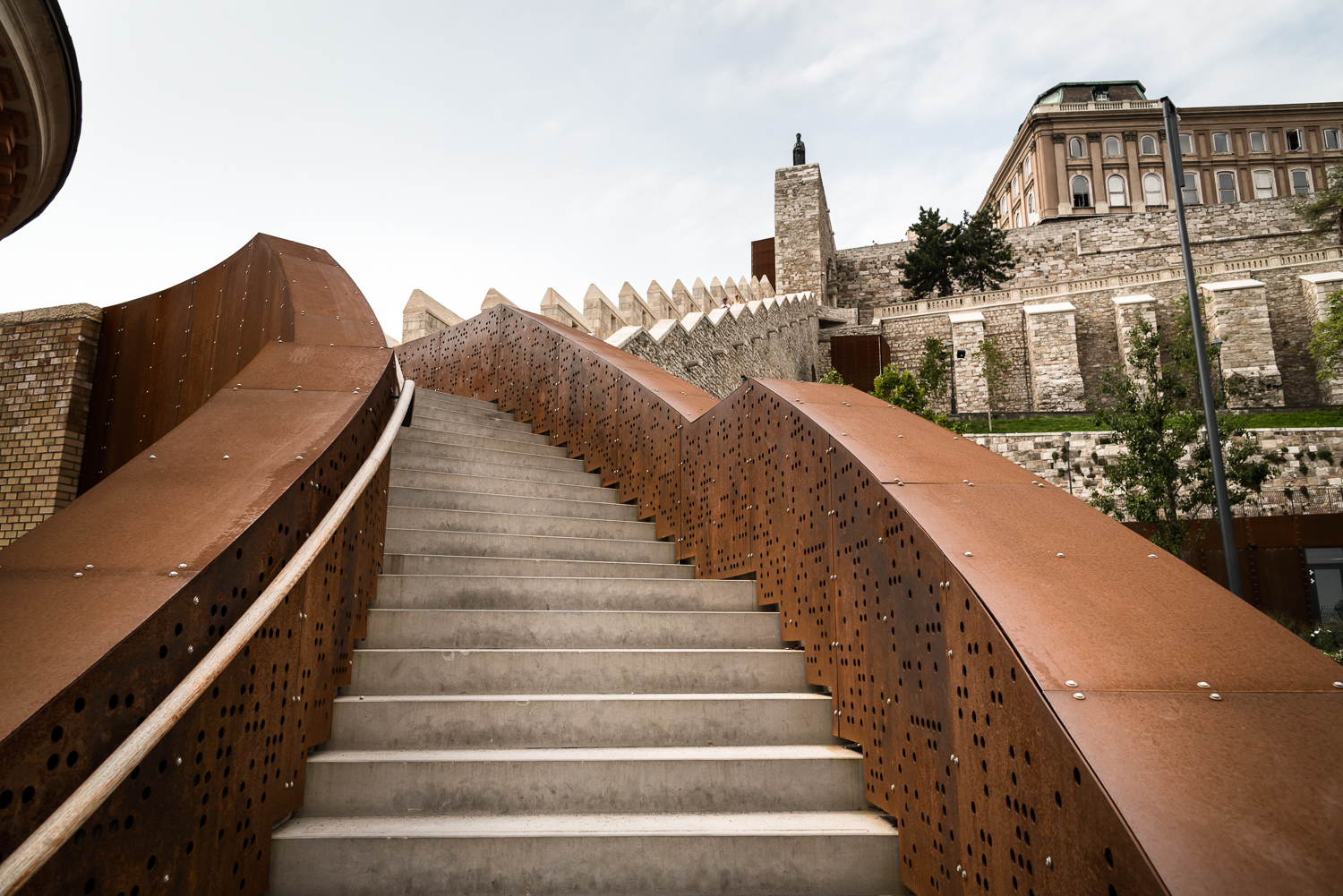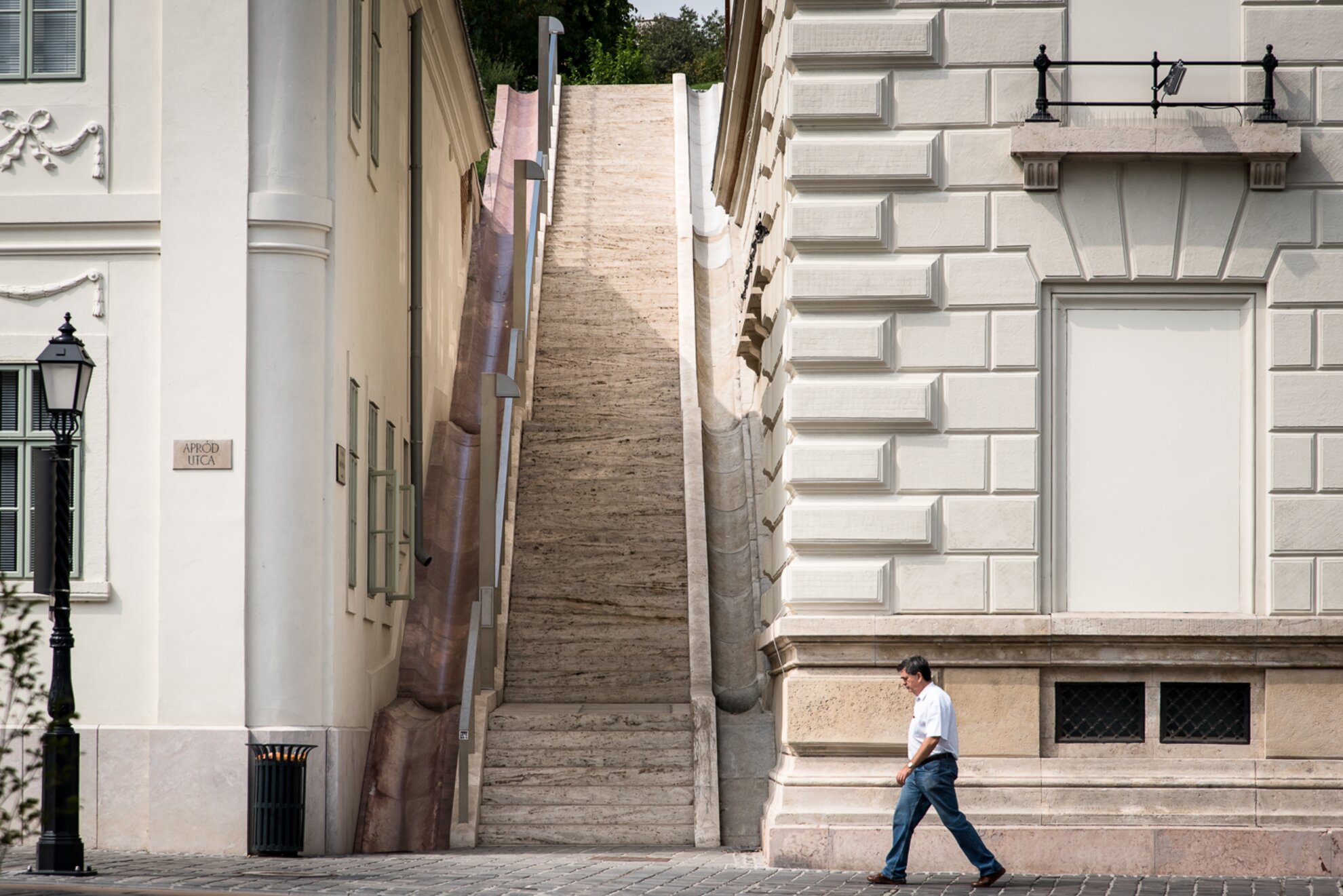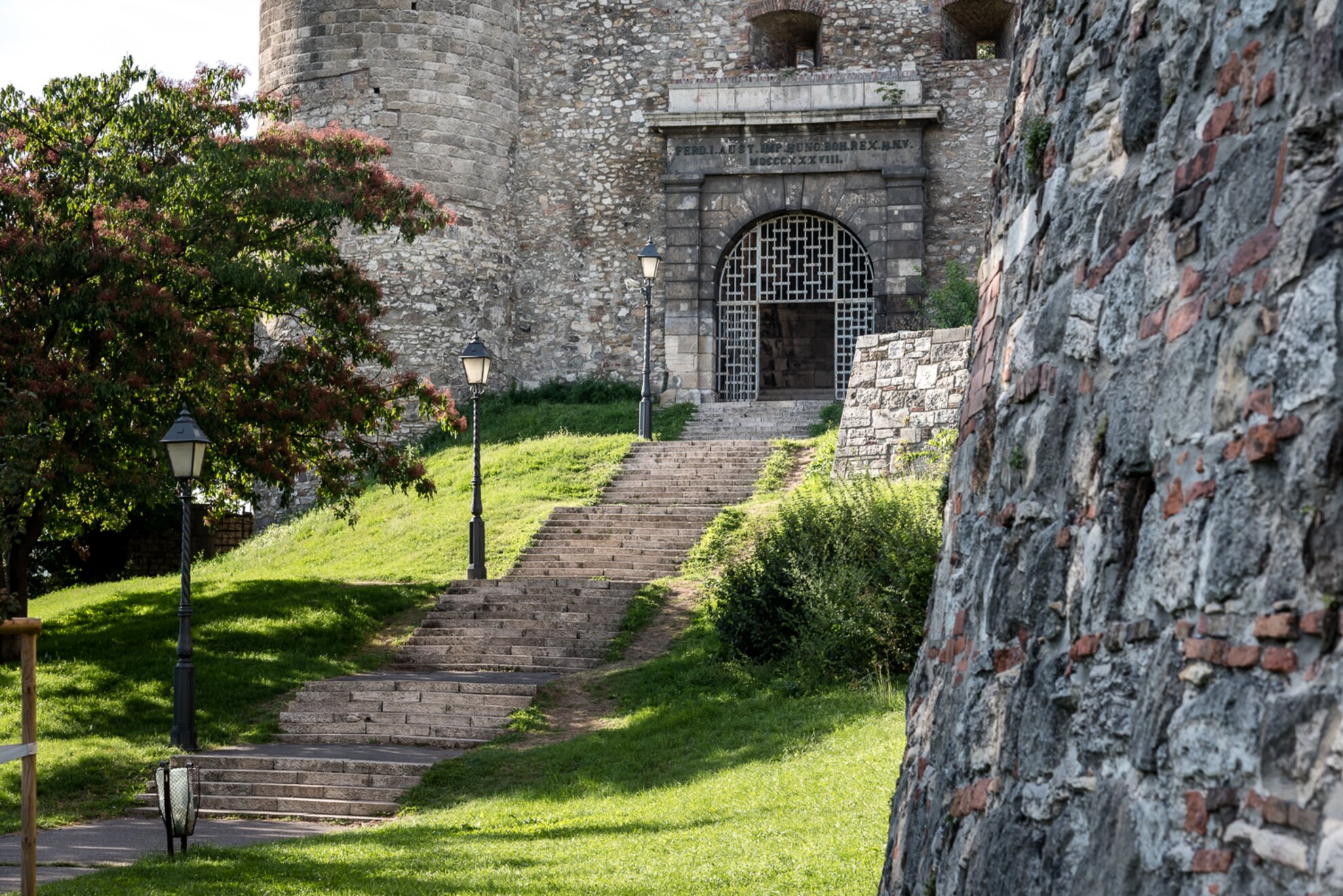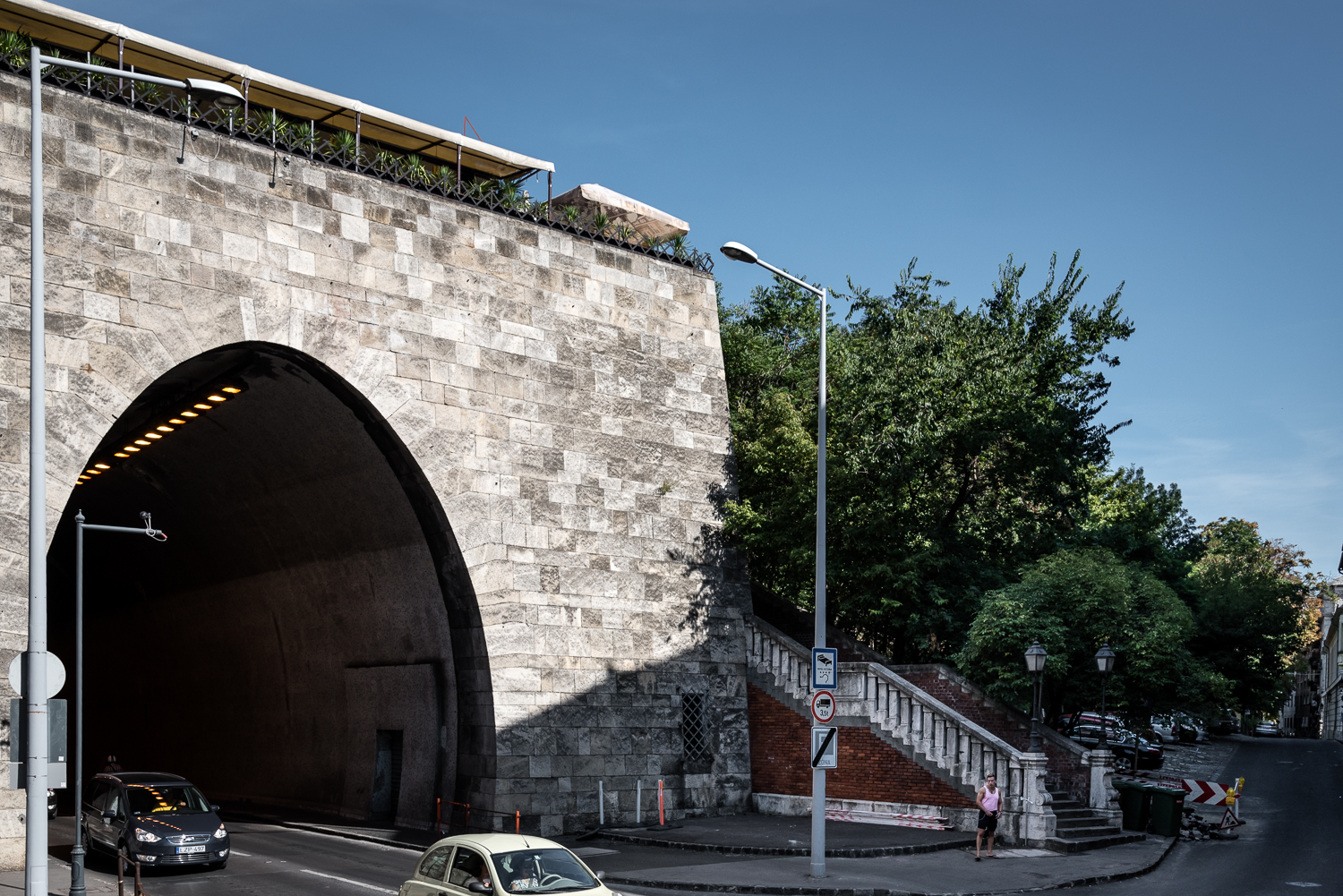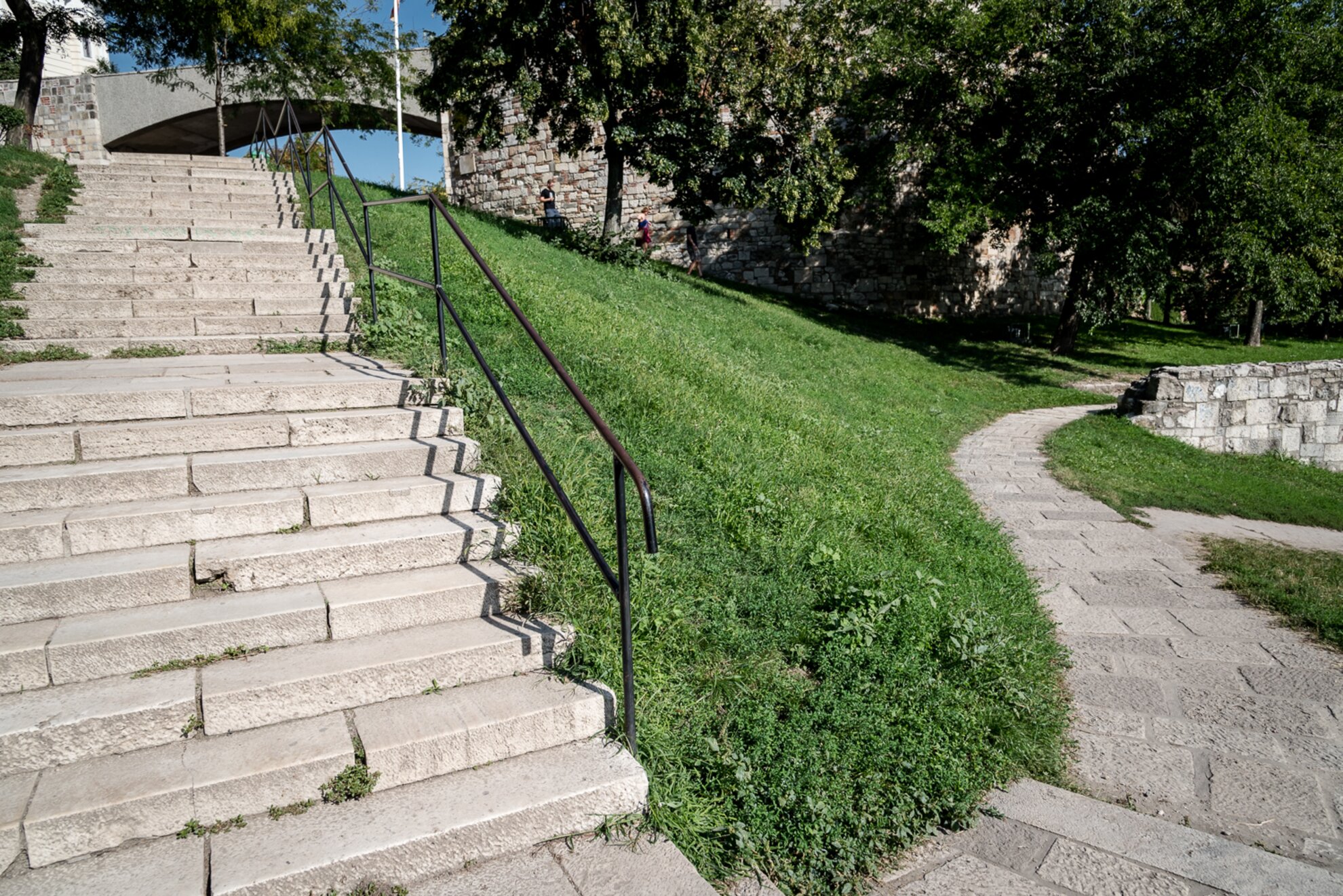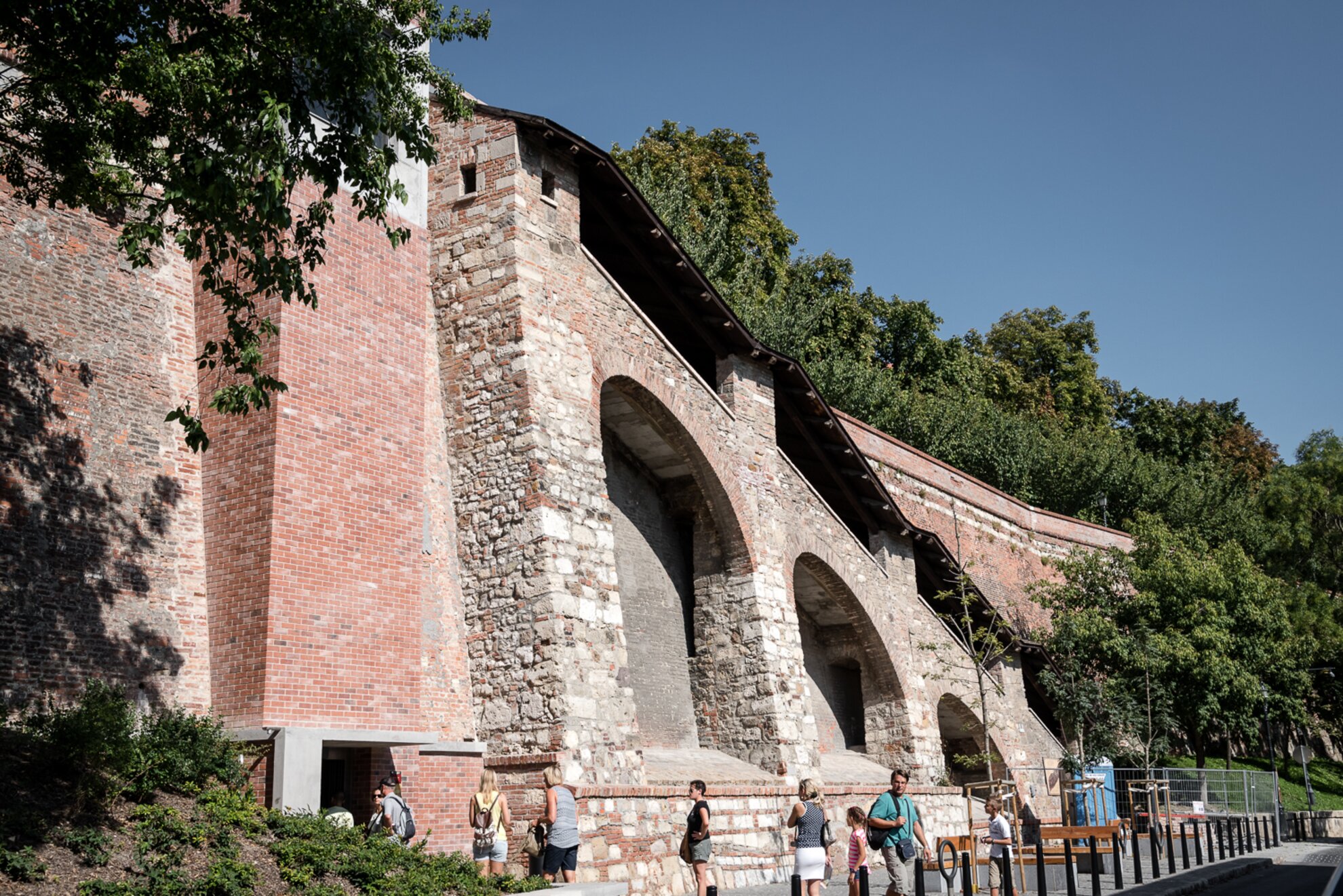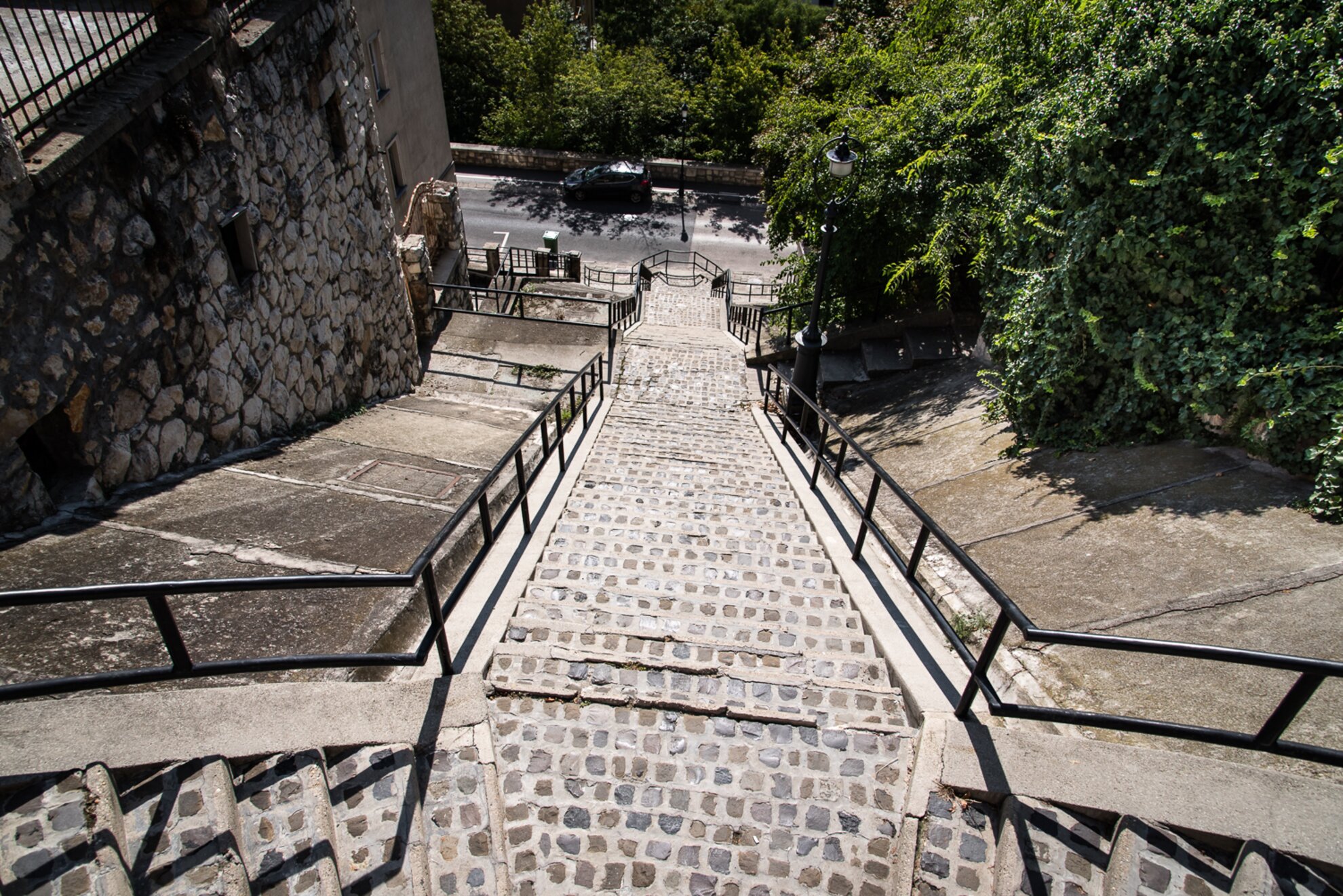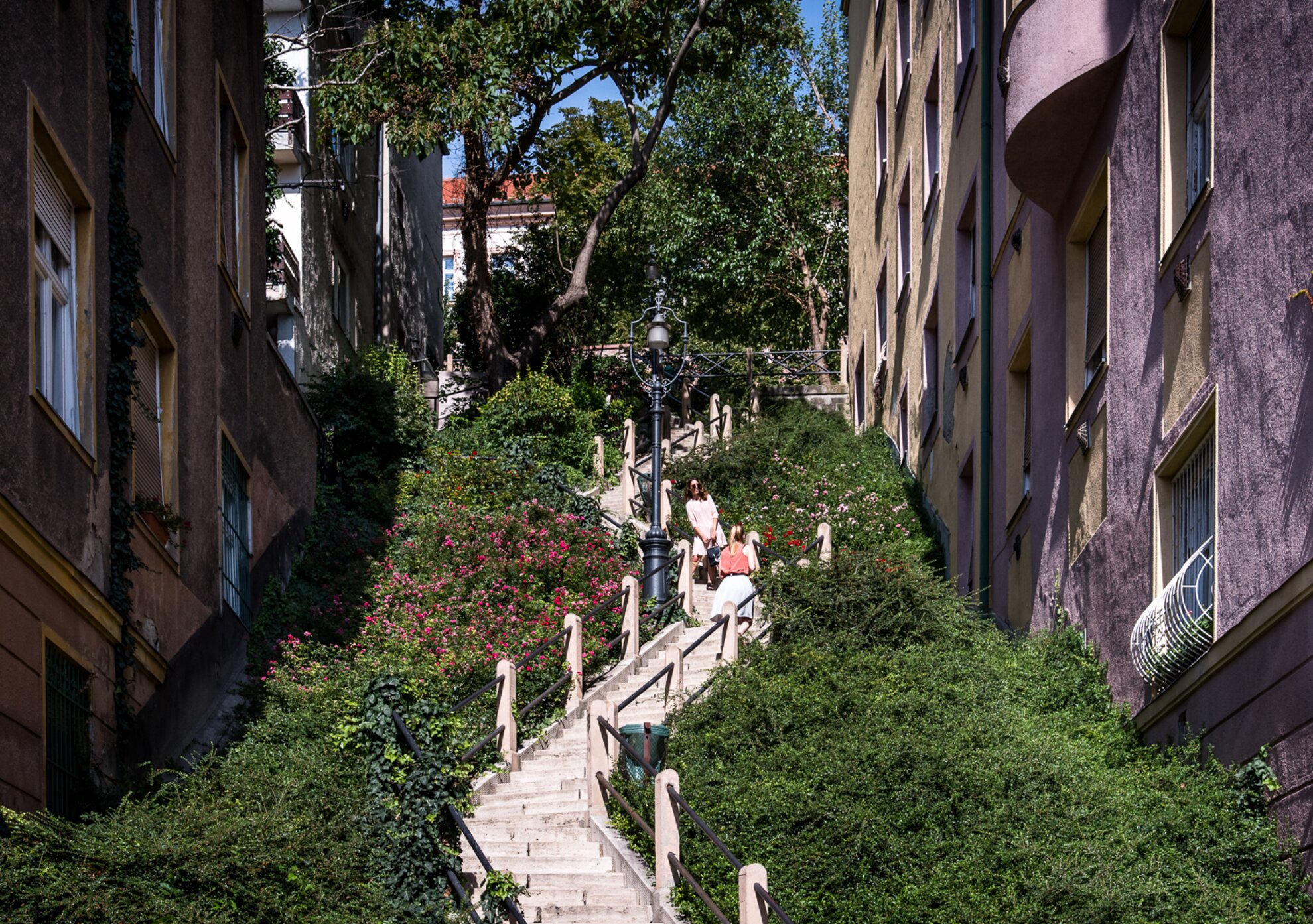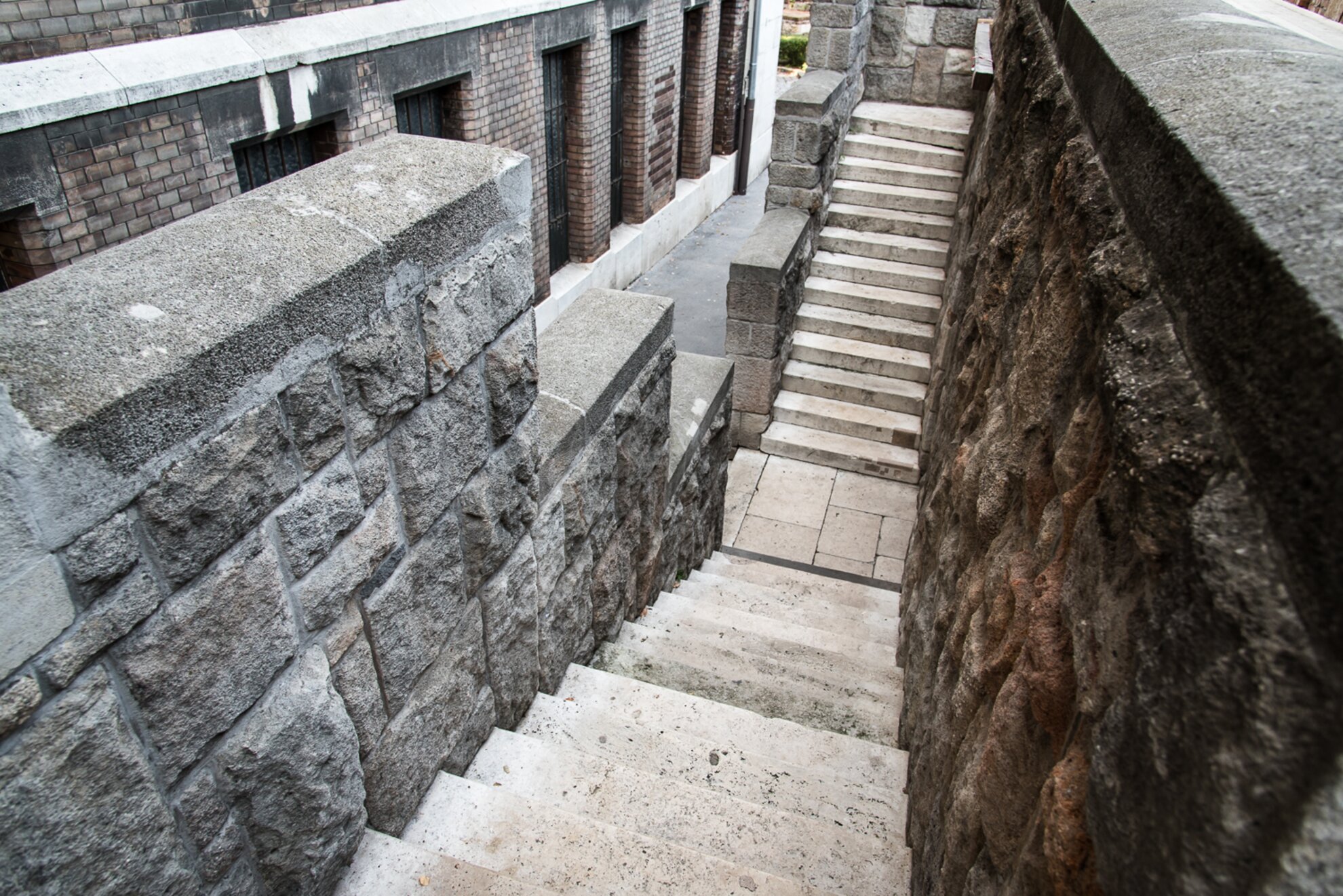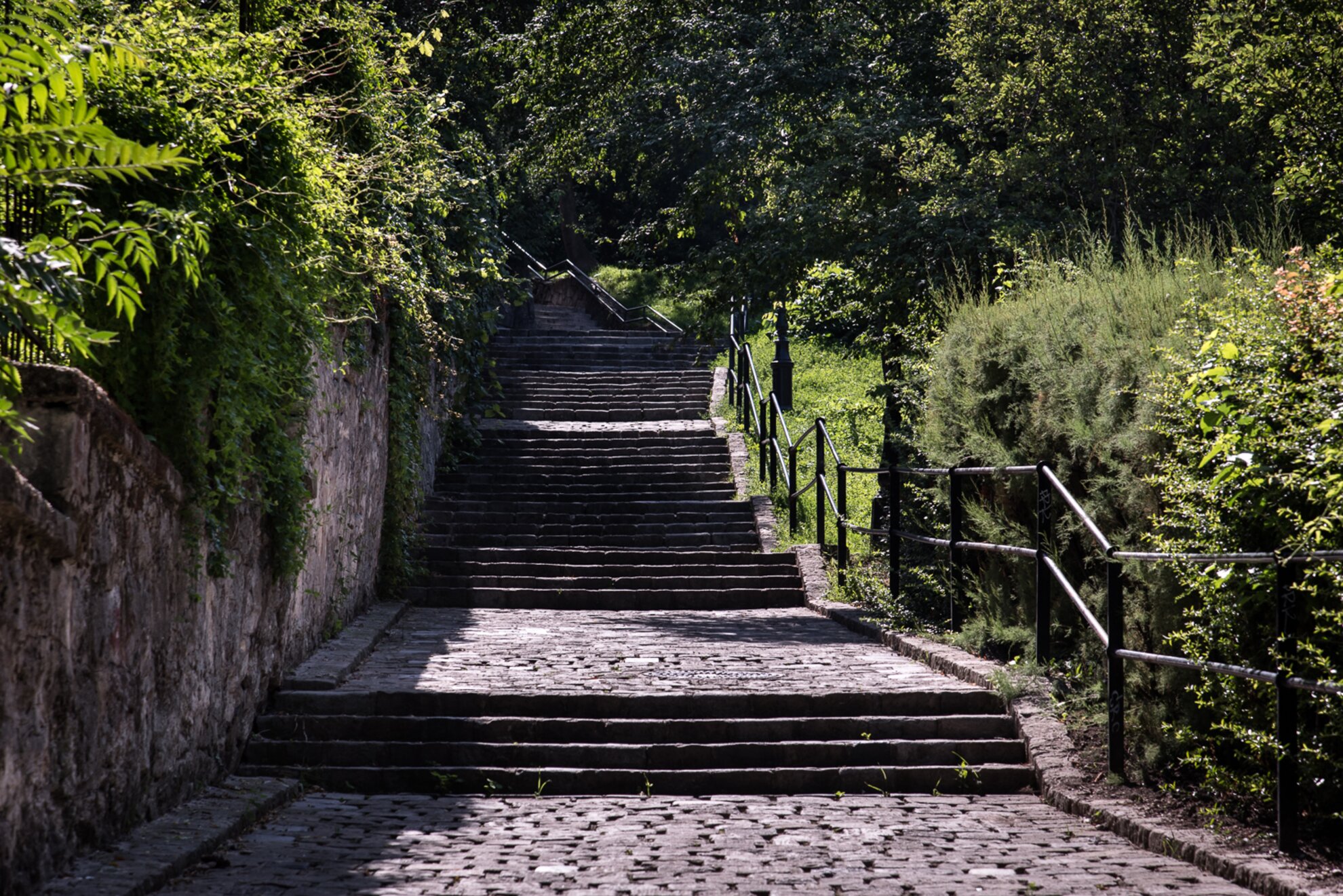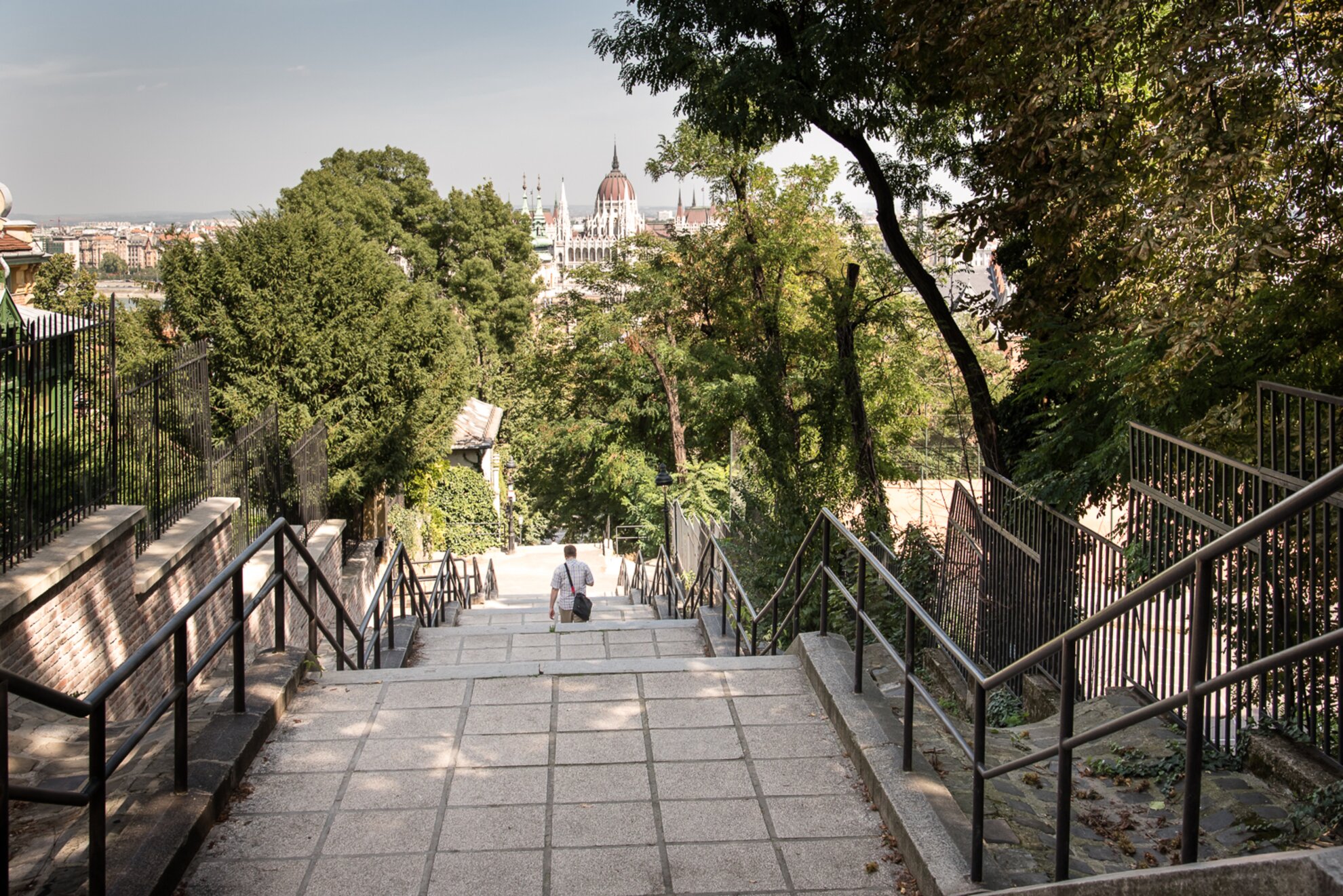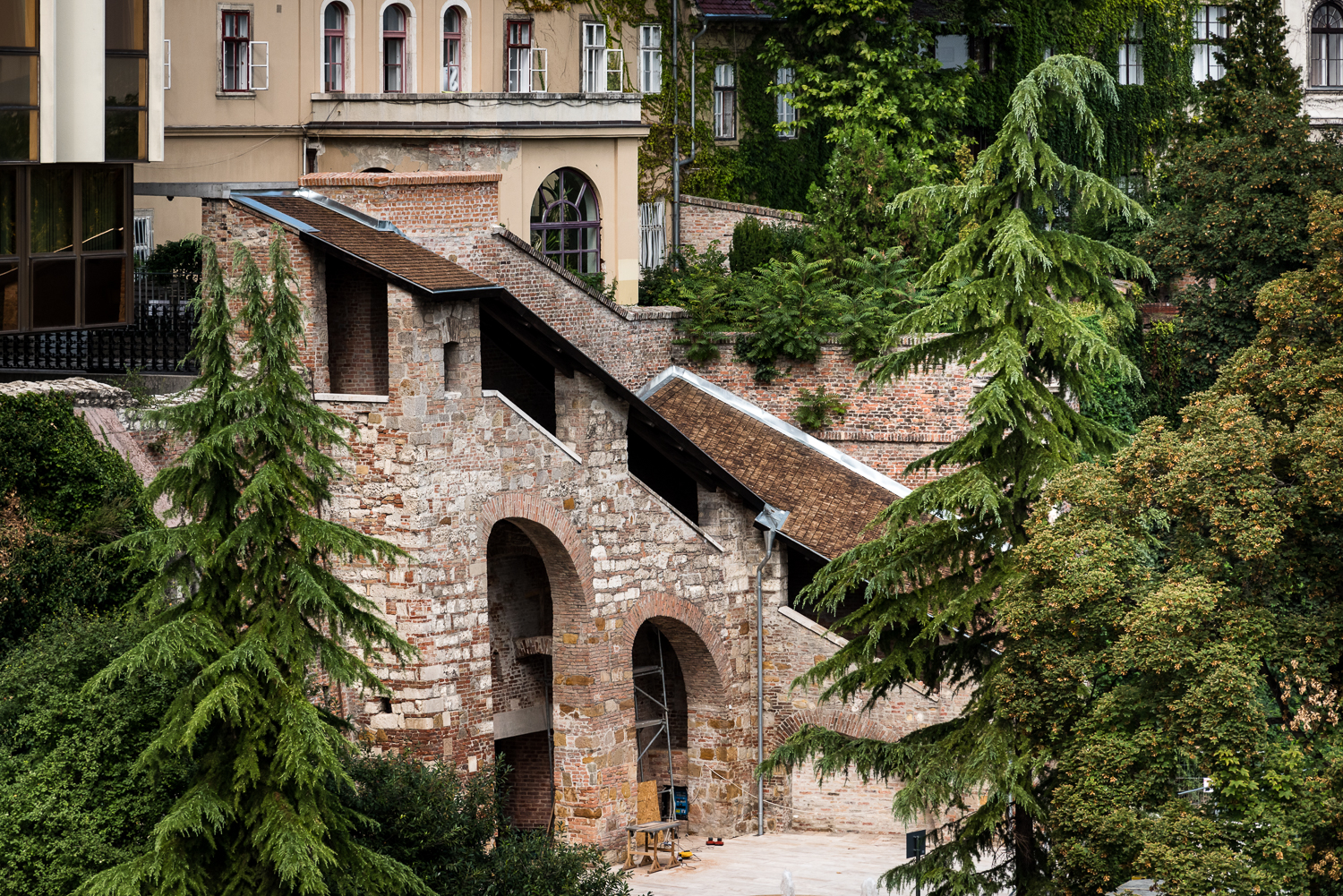The majestic Fishermen’s Bastion appears like a fairy-tale fortress, protecting Matthias Church with its conical towers, omnipresent statues, and a grand central staircase named after architect Frigyes Schulek. This is actually a relatively new addition to Buda’s skyline, built between 1895 and 1902 in connection with the city’s refurbishment for Hungary’s 1896 Millenary Celebrations.
Nearby attractions: Matthias Church, Ruszwurm confectionery, Hilton Budapest
Lined by tall trees, ivy-covered walls, and elegant wrought-iron lamps shaped with floral motifs, this often-overlooked stairway – found just downhill from Fishermen’s Bastion – provides a pleasant shortcut toward the Castle District from Buda’s riverfront. With its name translating to “ribbon” in Hungarian, the gently winding path of these shaded steps seems entirely appropriate.
Nearby attractions: Clark Ádám Square, Fishermen’s Bastion
Winding up to the Royal Palace from Clark Ádám Square as an alternative to the Buda Castle Hill Funicular, this series of paths and steps is frequently traveled by international Budapest visitors seeking a sporty (and free) means of reaching the monumental hilltop. Along the way, walkers pass through historic arches and forested parkland before emerging near the Habsburg Gate.
Nearby attractions: Buda Castle Hill Funicular, Buda Castle Tunnel, Clark Ádám Square
This dignified ceremonial entryway to the Royal Palace’s sprawling front terrace harkens back to the era when Austria’s imperial family ruled over Hungary; the portal’s intricate Baroque styling and ornate wrought-iron lampposts present a statuesque welcome for visitors. The gate’s dual stairways are symmetrical, but the view from the eastern flight is much more panoramic.
Nearby attractions: Buda Castle Hill Funicular, Royal Palace
Following an extensive renovation project, the Várkert Bazaar – once the grandest entryway to the Royal Palace, designed by Opera House architect Miklós Ybl – is once again a majestic portal to the Buda Castle, with both its historic stairway restored and some modern new stairways added (not to mention the addition of a long escalator), all taking visitors to nice lookout points.
Nearby attractions: Royal Palace, Hungarian National Gallery
Apparently named after one of Hungary’s wildest aristocrats – a 19th-century daredevil famous for horsemanship stunts like jumping over other horses, riding indoors, and steering a horse-drawn carriage down a Buda Castle staircase – it’s unclear if these steep steps near the Várkert Bazaar were the exact stairway that Count Sándor drove down, but if so, wow.
Nearby attractions: Várkert Bazaar, Semmelweis Medical History Museum
Beneath the all-encompassing lookout windows of the “Mace Tower”, this curving bulwark stands as a fortification of Buda’s Royal Palace for centuries, and includes several intriguing stairways that were almost certainly trod by frantic castle defenders during the city’s numerous sieges. From certain angles, some of the steps blend seamlessly into the stone walls behind them.
Nearby attractions: Royal Palace, Hungarian National Gallery
Beside the western end of the long tunnel (“alagút” in Hungarian) that runs beneath Castle Hill, this steep staircase is lined with thick trees and flowing ivy, providing an instant escape from the central-Buda bustle. While these steps do not lead directly to the Buda Castle plateau, they do provide access to the stylishly appealing Manna Lounge, a hidden eatery and bar.
Nearby attractions: Buda Castle Tunnel, Hospital in the Rock
On the Castle District’s less-developed side facing downtown Buda, this low-key set of steps winds through steep lawns towards the Royal Palace, lined only by occasional railings, lampposts, and moss-covered low walls. However, while this stairway may lack grandiose design elements, the views that this route provides over the Buda Hills make descents a panoramic pleasure.
Nearby attractions: Buda Castle Tunnel, Royal Palace
Two segments comprise this long stairway leading from central Buda to the peak of Castle Hill – a newer tree-shaded series of flights lined with benches, and a much older gracefully arched covered staircase ascending the brick rampart (augmented by an elevator). Between the two lies a stately bust of Hungary’s prolific 19th-century historical novelist Károly P. Szathmáry.
Nearby attractions: Hospital in the Rock, Ruszwurm confectionery
Considering that Sándor Jávorka was Hungary’s leading botanist through much of the 20th century, exploring the diverse flora of Hungary and surrounding regions over a decades-long career, it’s ironic that the cobblestoned staircase that bears his name is largely surrounded by concrete instead of plant life… but a few trees provide some greenery for these otherwise stately steps.
Nearby attractions:Church of Mary Magdalene
Fertile flowerbeds surround this zigzagging staircase tucked between colorful apartment buildings on the western slope of Castle Hill – and since “korlát” merely means “railing” in Hungarian, is there any chance that city officials made a mix-up when naming these steps and the nearby Jávorka Sándor Stairs? The aforementioned botanist would surely prefer this verdant stairway.
Nearby attractions: Hospital in the Rock, Baltazár Budapest
Since the Middle Ages, this northernmost point of Buda Castle is the site of a gate leading towards Austria’s capital, although the current archway was only built in 1936. Hidden stairwells are tucked within the sides of this stone monument, leading up to an often-overlooked observation point that provides a uniquely sweeping view over central Buda and the Danube River.
Nearby attractions: Church of Mary Magdalene, Baltazár Budapest
Mysteriously, the name of this path means “clam” or “shell” in Hungarian; we suppose that the concave cobblestoned drainage ditches that surround the lowest flight of this staircase by Mária Square do somewhat resemble mollusk armor… but regardless, this is a long and serene stairway stretching through some of the loveliest green-space expanses found on the slopes of Castle Hill.
Nearby attractions: 21 Hungarian Restaurant, Church of Mary Magdalene
This short but scenic stairway cuts through a posh residential area toward the Buda Castle ramparts, and while it is almost certainly named after 17th-century Hungarian heroine Ilona Zrínyi, it intersects with a street honoring another bold woman bearing a similar name – Ilonka Szabó, an opera soprano who joined Hungary’s resistance movement against the Nazis during World War II.
Nearby attractions: Pest-Buda Restaurant, Hilton Budapest
Dating back to 1778, this covered staircase is one of the most historic sets of steps leading to the Buda Castle, and it has surely been the site of varied battles over the centuries since then; the once-nearby school (“iskola” in Hungarian) that its name refers to was destroyed during World War II. However, this stairway is now in excellent condition after a recent renovation.
Nearby attractions: Hilton Budapest, Pest-Buda Restaurant, Fishermen’s Bastion
The article, written by Nick Robertson, was originally published in 2015. This is the updated version.
(Cover photo: Norbert Juhász - We Love Budapest)
